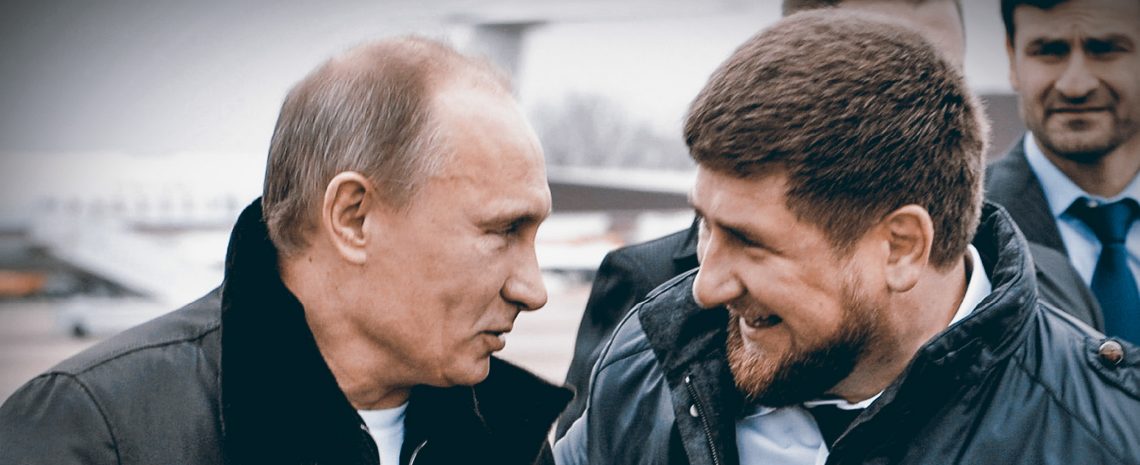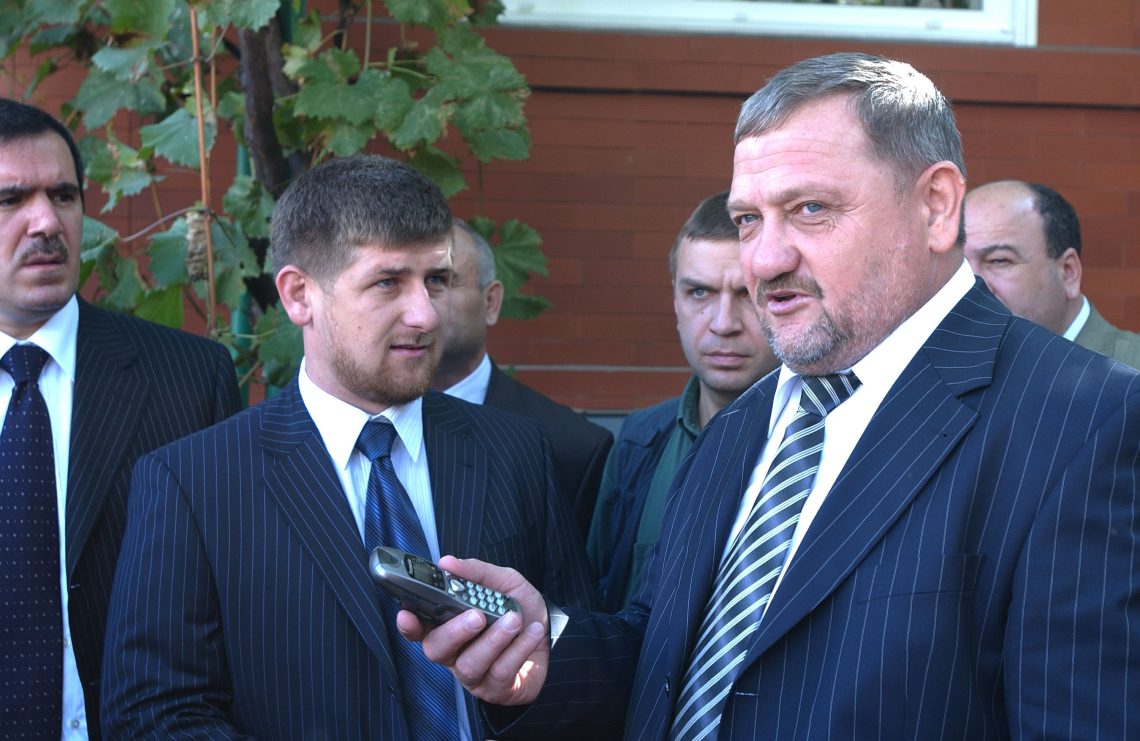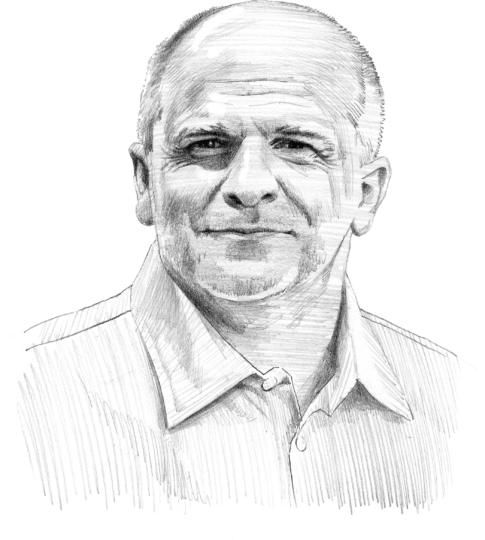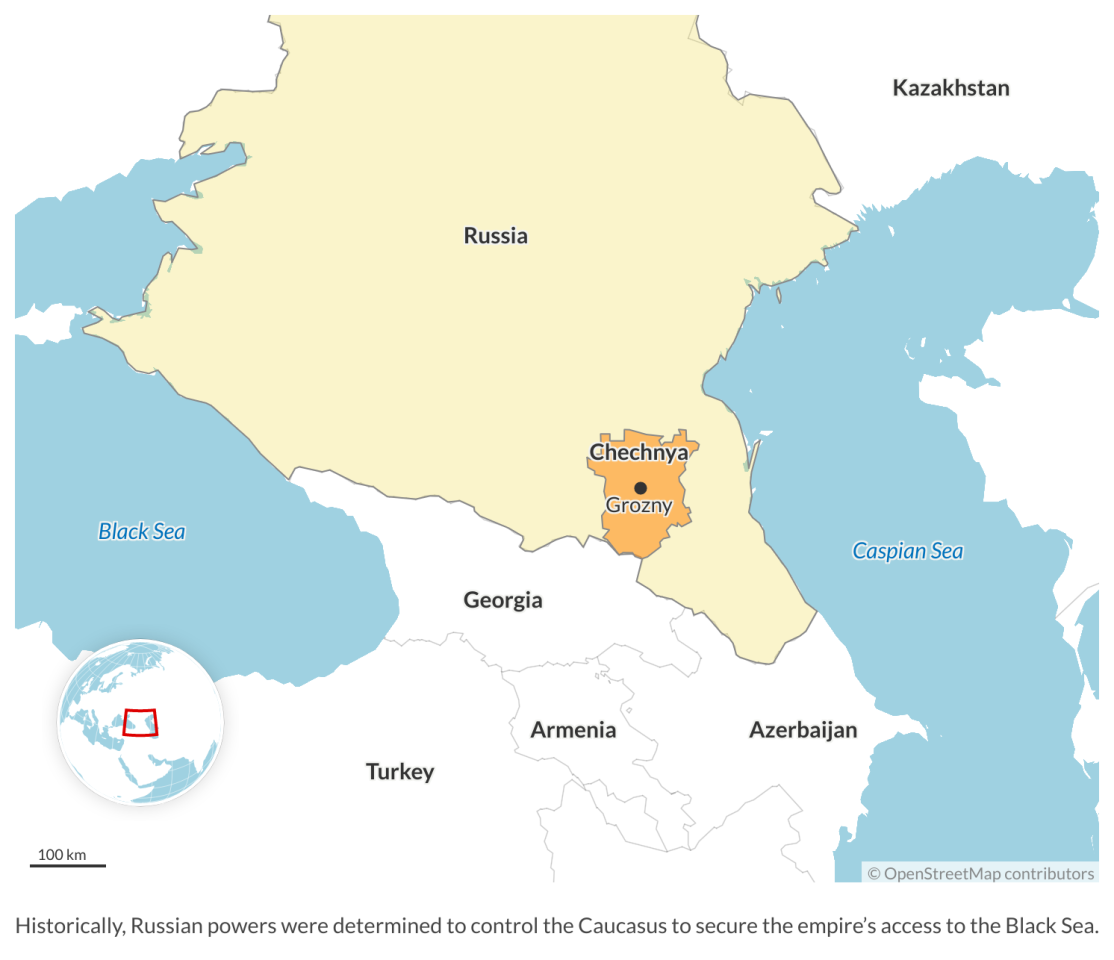Chechnya: A litmus test of Russia’s power
The history of the Chechen Wars and the Kadyrov family’s evolving role point to potential power shifts and challenges for Russia.

In a nutshell
- Chechen leaders have often challenged Russian power
- Ramzan Kadyrov has established a brutal dictatorship in Chechnya
- His relations with the Kremlin have cooled since the invasion of Ukraine
For centuries, the small North Caucasus territory of Chechnya has served as a barometer for the state of the Russian nation. Now that Russian politics revolve around the war in Ukraine, we can gain valuable insight by looking at how the Kremlin deals with its former opponent. To understand the compelling reasons to monitor developments in the area, it is worth taking a look at some of its history.
Shamil’s legacy
The myth of Chechnya’s resistance against imperial Russia is rooted in the tradition of Imam Shamil, the legendary leader who commanded the Caucasian highlanders in the mid-19th century. Shamil led a rebellion and established the Caucasian Imamate in the North Caucasus (1828-1859). At the time, Russian rulers’ objective was to weaken Turkish and Persian influence, with the mountainous Imamate proving to be a significant obstacle. Control over the Caucasus, along with Crimea, was intended to secure Russia’s position on the Black Sea and provide access to the Mediterranean Sea via the Bosporus.
Even after Russia conquered the South Caucasus, the easily defended mountainous terrain of the Imamate continued to elude conquest. The resilience of the local population was rooted in a strong identity that encompassed religious, military and political traditions. The struggle for control of the Caucasus captured the interest of Western governments, who understood that Russia’s position in the strategic Black Sea region hinged on the conflict’s outcome.
In the 19th century, Chechnya eventually became part of the Russian Empire. After 1917, it failed to establish itself as an independent republic within the Soviet Union, attaining only the status of autonomous republic – an administrative subdivision inside the Russian Soviet Federative Socialist Republic. However, the spirit of struggle against the empire persisted in Chechen tradition and remains strong to this day.
Deportation and independence
Chechnya maintained its independence aspirations even during Soviet times. Following the German occupation of the Caucasus during World War II, some Chechen and Ingush groups began collaborating with the Germans in 1943 and 1944, hoping to gain independence. However, the majority of the Chechen-Ingush population opposed Germany, joining the fight against them on the Soviet side.
For Stalin, the fact that some Chechens supported Germany provided a convenient pretext to find a “final solution” to the long-standing North Caucasus question. Consequently, Soviet authorities decided to deport the Chechen population en masse and dissolve their republic.
The deportation was brutal and involved numerous murders. It is estimated that about a quarter of Chechnya’s population lost their lives. After the Chechens and Ingush were taken out of Chechnya, the republic was settled with people from other parts of the Soviet Union.
Facts & figures
The idea of independence resurfaced during the collapse of the Soviet Union. On October 7, 1991, Dzhokhar Dudayev became president and declared the independence of Chechnya a few days later. Chechens saw how statehood was effortlessly granted to Central Asian republics like Tajikistan and Kyrgyzstan, rekindling hopes for a Chechen state.
In 1991, Moscow immediately challenged the legitimacy of Dudayev’s election. The widespread opinion was that Chechnya’s secession from the Russian Federation would set a precedent for other republics like Tatarstan.
Yeltsin’s war
Against this backdrop, the First Chechen War erupted, with the political goal of forcibly retaining Chechnya within the Russian Federation. It was fought by a diminished empire – the Russian Federation, not the Soviet Union – within its own territory. From Moscow’s perspective, it was a defensive war.
At the time, President Boris Yeltsin’s circle attempted to prevent dialogue with Dudayev. The Russian president’s associates believed that maintaining the lines of communication open between Dudayev and Yeltsin would strengthen the former’s legitimacy and harm the latter’s image.
Yeltsin was facing significant opposition in Russian politics. In the 1993 parliamentary elections, Vladimir Zhirinovsky’s nationalist party surpassed Yeltsin’s party, with critics accusing the Russian leader of causing the country’s disintegration. Afraid to lose the 1996 presidential election, Yeltsin decided to issue secret, unconstitutional war decrees in November and December 1994 to invade Chechnya. By June 1995, Russian forces had inflicted at least 30,000 casualties, including thousands of children.
More by Pawel Kowal
Crimea’s past, and its postwar future
Putin’s lonely Russia
Russia’s attempt to build a Third Empire
During this time, the Kadyrov family began establishing its influence in Chechen politics. Akhmad Kadyrov and his son Ramzan were among Russia’s most formidable adversaries during the First Chechen War. In April 1995, President Dudayev appointed Akhmad Chief Mufti of Chechnya. He played a significant role in helping Chechnya resist the onslaught from Russia.
The Russian Federal authorities eventually signed the 1996 Khasavyurt Accord with Chechnya – a major success from the Chechen perspective. However, the agreement paved the way for Russia’s brutal interventions in subsequent years. After 1996, Chechnya became an unstable region, often portrayed in the West as a hotbed of Islamic fundamentalism and terrorism.
Putin’s war
A crucial factor in understanding Chechnya’s subsequent fate is the Kadyrovs’ about-face. Akhmad Kadyrov, during the period of de facto Chechen independence after 1996, found himself in conflict with the increasingly influential Wahhabi groups. Religious conflicts gave rise to political disputes and power struggles. Kadyrov waged an effective campaign against the Wahhabis; however, not everyone supported his efforts. Chechen President Aslan Maskhadov aimed to build a broader consensus among different social groups, which allowed the expansion of Wahhabi influence.
Kadyrov had a different approach to the Wahhabi question. At the beginning of the Second Chechen War, he liberated the northern part of the republic from Wahhabi rule, making it possible for the Russians to take over. He then urged his fellow Chechens not to fight the Russians.
On August 8, 1999, Vladimir Putin became prime minister of the Russian Federation. The following month, several residential buildings in Russia were attacked, with two incidents occurring in Moscow. The Russian authorities blamed Chechen terrorists. However, some commentators suggested that the attacks were likely provocations to justify another intervention in Chechnya, particularly as the five-year truce established in 1996 was nearing its end.

Prime Minister Putin, preparing to assume power in Russia, seemingly sought to legitimize his authority through war, using the fight against Chechen terrorism as a pretext. The Second Chechen War began with Russian air raids on Chechnya, and on October 1, a ground offensive. However, unlike Yeltsin in 1994, the Russian leader combined military and political action. He formed an informal alliance with Akhmad Kadyrov and his clan. The terms for the Kadyrovs’ allegiance were straightforward: they would ensure stability in the republic, and Russia would guarantee their power in Chechnya and finance the Chechen budget.
Throughout the 2000s, the Russian forces managed to occupy most of Chechnya, with independence fighters reduced to guerilla tactics. In March 2003, a constitutional referendum was held in Chechnya, and the new constitution guaranteed that the territory would remain part of the Russian Federation. The draft of the new constitution was presented by Akhmad Kadyrov, siding with the Russians despite having fought them earlier. He became president of the Chechen Republic, a part of the Russian Federation.
However, his rule was short-lived – on May 9, 2004, during the Victory Day celebrations, he was assassinated in a meticulously planned attack at a stadium in Grozny. President Putin agreed to pass on the presidency to Ramzan Kadyrov, who rapidly gained influence and has been leading Chechnya since 2007.
Kadyrov’s kingdom
President Kadyrov has so far managed to maintain stability in the republic. However, he has also implemented a brutal dictatorship.
The outcomes of the First Chechen War and the pact with the Kadyrovs are ambivalent for Moscow: on one hand, Russia has secured stability in the North Caucasus and the ability to exercise relative control over this sensitive region. On the other hand, Ramzan Kadyrov’s strongman rule has led to a sort of autarky of the republic. With its distinct legal order and governance system, Chechnya has become an island within Russia, connected with the federal state only through subsidies.
As a war commander, Ramzan Kadyrov has proven indispensable to President Putin’s warfare on several occasions, including in conflicts outside of Chechnya. For instance, his East Battalion played a crucial role in the 2008 war with Georgia, as well as in Crimea, Donbas and the invasion of Ukraine. President Kadyrov has shown unwavering loyalty to the Russian leader, ready to fight anywhere and anytime if the Kremlin requires it.
Facts & figures
Understanding Chechnya
- Chechnya has a population of around 1.4 million people, predominantly consisting of ethnic Chechens. The population is relatively young, with a high birth rate compared to other regions in Russia.
- The majority of Chechens are Sunni Muslims, but Sufi Islam has also been influential throughout the history of the region.
- Alongside Russian, the Chechen language is broadly spoken. It was initially written using Arabic script. In 1925, the Latin alphabet was introduced, and in 1938, the Cyrillic script was adopted.
- The construction industry in Chechnya has experienced a boom in recent years, particularly in the capital city of Grozny. This growth has been fueled by significant investments in infrastructure projects, aimed at rebuilding the region after the devastation caused by the Chechen Wars. Still, the Chechen economy is heavily dependent on financial support from the Russian federal government.
- The Kadyrov regime has faced numerous allegations of human rights abuses, including forced disappearances, torture and extrajudicial killings.
This approach is convenient for the Kremlin, but also problematic. Ramzan Kadyrov has political ambitions that clash with President Putin’s determination to keep the area under a tight lid. Since February 2022, the Kremlin has been more distant toward the Chechen leader, and the trend is likely to continue given the surge of ethnic Russian nationalism.
Ramzan Kadyrov opposed the conscription of large numbers of Chechens during the autumn-winter mobilization of 2022. He argued that small Chechnya’s contribution to the war effort was already substantial. But even though he has less leverage with Moscow, the Putin regime itself is also weaker after its failures in Ukraine.
Scenarios
There are three possible scenarios for the rule of Ramzan Kadyrov in Chechnya. First, he could remain loyal to the Putinist system, potentially being rewarded with more power.
Second, he could attempt to redeem his father’s betrayal of the Chechen cause and seek independence again.
Third, he could be removed by President Putin. Recently, the Chechen leader has been rumored to be ill – perhaps with kidney failure as the result of poisoning. It is also noteworthy that President Putin recently met with Ramzan’s seventeen-year-old son, Akhmad (also known as Akhmat). This could be a warning to the father. Or it could be a signal to the pro-Russian Chechen elite that the Kremlin would guarantee stability in the republic even after the death of Ramzan Kadyrov.
A longer-term scenario for Chechnya would be to achieve independence and contribute to the dissolution of a severely weakened Russia over the next decade. In such a scenario, there may be another political reversal, with one of the Kadyrovs deciding to lead this movement. However, Ramzan Kadyrov would not be able to rely on international support due to the numerous crimes he has committed while serving the Kremlin.
But Chechnya’s exit from the Russian Federation could also occur in opposition to the Kadyrovs and involve their downfall. In this case, it is likely that some exiled leaders would return to power and that radical Islamic movements would play an important role.










